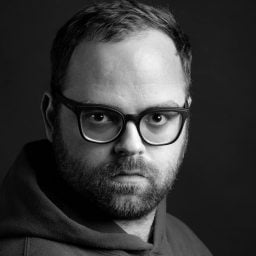Studio Visit
Nicole Cohen Revisits Her Surreal Video Projections for the 21st Century
'They're living their best lives' the artist said of her works ahead of a mid-career survey.

Four days a week, the video artist and photographer Nicole Cohen drives from her home in New Jersey to her studio around the corner from Pace University in New York’s Financial District where she teaches young artists how to make it in the art world.
Her studio is small, a single room just off bustling Fulton Street downtown—enough space for her, for now, to revisit her series of “Little Projections” that helped establish her in the art world back in the early 2000s. The works are intimate. Cohen films people, or groups of people, interacting with a blank space that she then projects over cutouts of rooms from historical magazines. Because of their scale, the projectors must be close to the surface, a “magical” 18 inches, she said, and are considered a part of the work.
In the past, when Cohen sold her works, the “Little Projections” included the technology used to display it—the VHS tapes or DVDs onto which they were saved, and the analog projectors used to show them. But as she prepares for an upcoming mid-career survey at Stony Brook University on Long Island, the artist has been working to convert her videos into a digital format and re-project them from new projectors.
Despite being known for her smaller works, Cohen made headlines in the 2000s for a work commissioned by the J. Paul Getty Museum in Los Angeles, titled Please Be Seated. For that interactive installation, Cohen made replicas of the museum’s 18th century French chairs and placed them into one of its galleries where she used video technology to allow visitors to sit on them and see themselves on a screen as if they were on the actual chairs.
Her work has also been shown at the Brooklyn Museum, the Los Angeles County Museum of Art, and the Williams College Museum of Art, among other galleries and institutions. Although she’s best known for her digital works, her practice extends beyond video. Some have further explored period rooms and interior design, using a blend of vintage magazine photographs and her own images in collage works.
Now, the artist plans to use her studio to once again make large-scale, room-filling installations as she hopes to soon expand into other spaces within the building.
My appreciation for her work began when we serendipitously met at the inaugural Artville fair in Nashville last year. There, we discussed our own art practices and realized we appreciate some of the same artistic concepts: how to blend analog and digital formats, how to blend static images with video, and how to generate dream-like settings through photographic surrealism by way of double-exposure and collage.
Last month, I met with Cohen at her studio where we discussed the focus of her work in preparation for her upcoming survey.
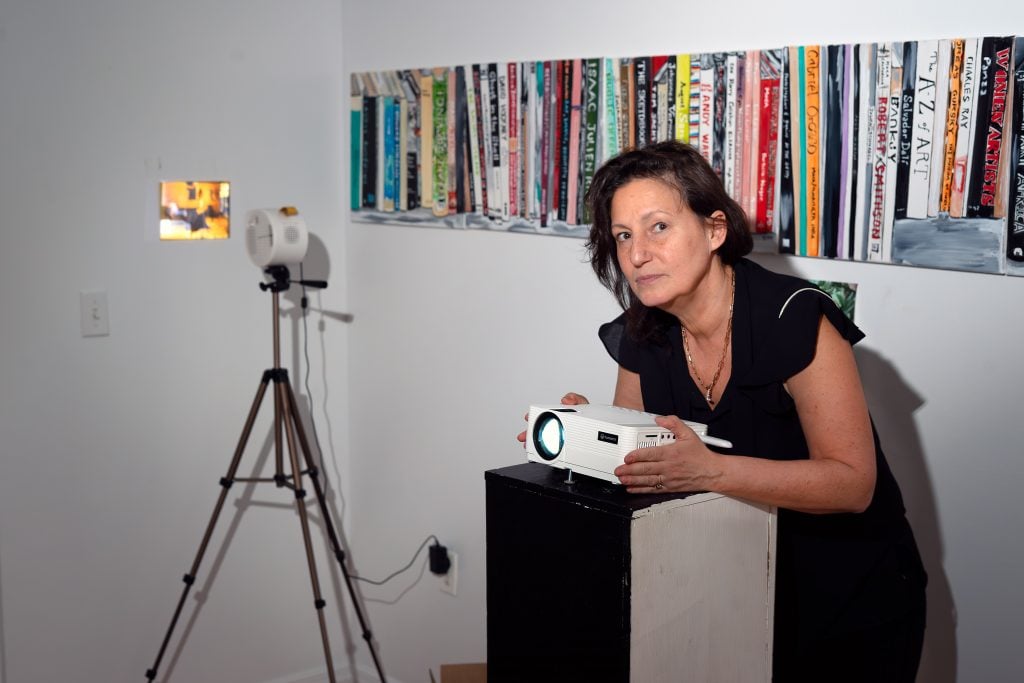
Artist Nicole Cohen speaks in her studio ahead of her mid-career survey. Photo by Adam Schrader.
Can you describe your standard day in the studio? How does it start? What do you first do when you arrive?
I’m an early person, so I get here around 7:30 a.m. and leave around 7 p.m. It’s long, but in the middle, I take a break because I go teach for about four hours. But I feel like it’s not enough. I have a model of the exhibition that I’m working on. I’m planning the installations and how people are going to navigate themselves through the space.
So, I kind of start with where I’ve left off the day before. But a typical day is drawing, thinking about how to get more people to model for my video installations, and figure out what I could do to challenge a new piece of technology. I recently started playing with [Amazon’s] Alexa, like how Alexa could help me make an installation. … Basically, it’s just a scramble. I’m just trying to survive.
So you have the upcoming mid-career survey. You mentioned how you’re preparing that now. Can you tell more about that?
Oh my gosh. That is a wild endeavor because I’ve been making videos for almost 20 years, and it started with VHS. When I had my first museum show at Williams College, I switched it all from VHS to DVD. Now, I have to switch everything again and make them all into MP4s. It’s really exciting because everything looks so much better. Everything’s shiny and clean.
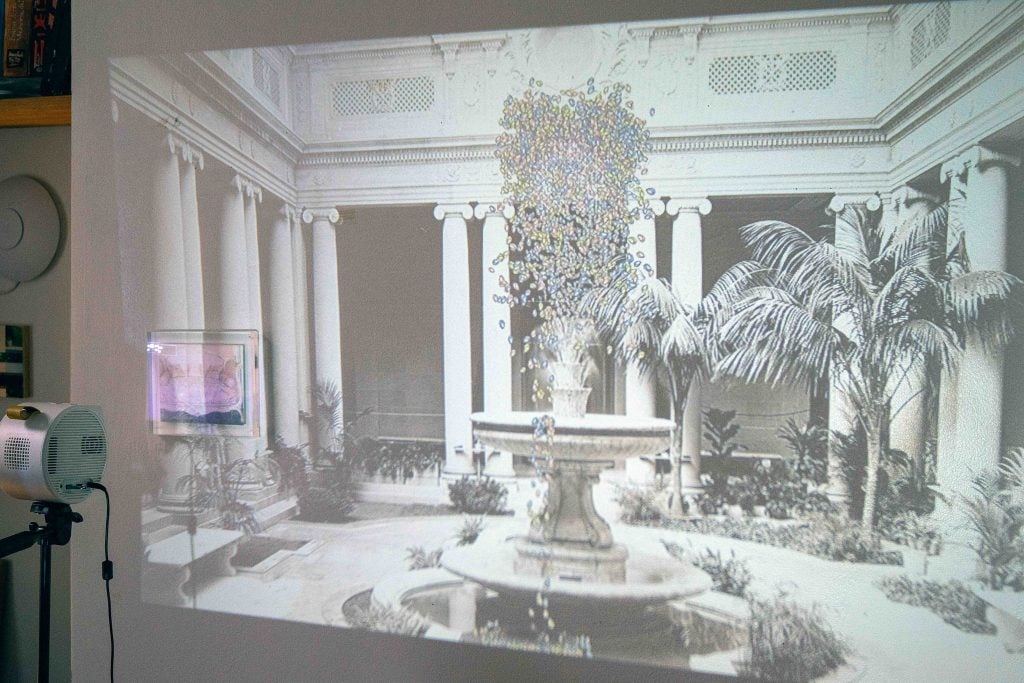
View of Nicole Cohen’s new work Pearl Drop playing inside of her studio. Photo by Adam Schrader.
Why change the format and update them? Some might consider the inherent graininess of the VHS tapes as part of the original piece.
For me it wasn’t really about the graininess. For some artists it is, and I get that. Some museums will keep the original VHS, like they’ll have in storage ten VCRs so they can always play the Nam June Paik on the VCR. But for me, I want life to be a little easier and my work to be more accessible. So MP4s and drives are so much better because they last longer. And, they play the way I’ve wanted them to this whole time. Now I finally have what I wanted. It can play in a loop, it’s got Wi-Fi, it’s got the best sound. It’s living its best life.
What else are you working on ahead of the mid-career survey?
I have to redo the piece I had the Brooklyn Museum because I’m trying to make it fit with the space. It’s a live piece called Studio Visit. So, you sit in the chair and you see yourself in the artist studios of famous women. The lighting has to be changed. It’s crucial because the person that’s sitting in the chair has to be lit appropriately so that the video will work. Last time, I used cameras from GameStop. So now I’m using a more a surveillance camera, like a real surveillance camera.

Artist Nicole Cohen shows off how her “Little Projections” work in her studio using a sheet of paper to block the projection. Photo by Adam Schrader
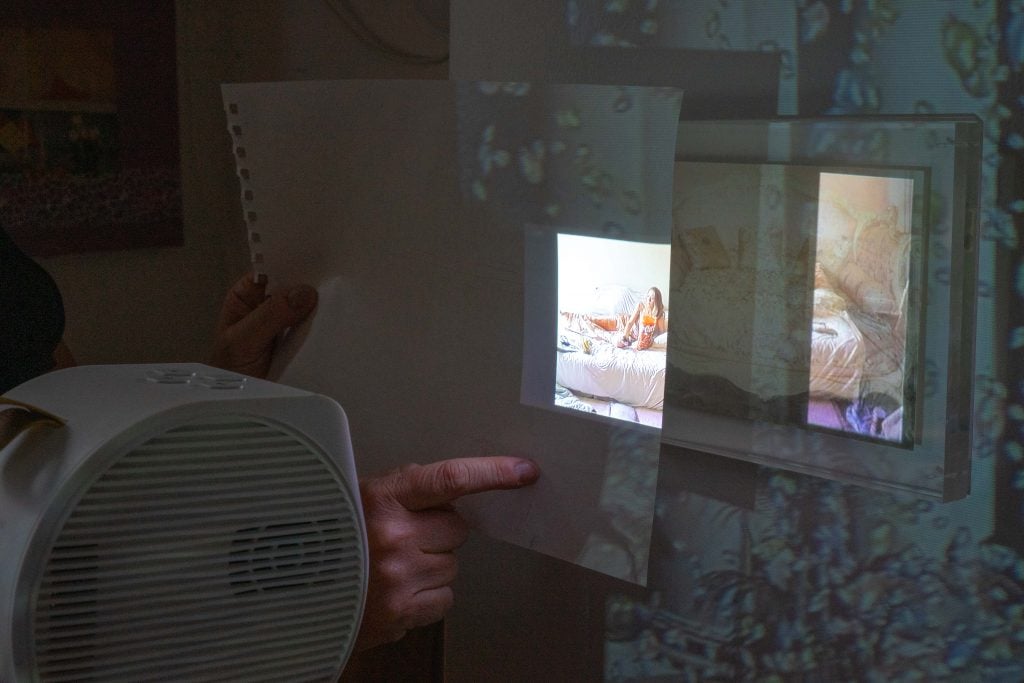
Artist Nicole Cohen shows off how her “Little Projections” work in her studio using a sheet of paper to block the projection. Photo by Adam Schrader
That’s cool because people I’ve heard in the past used the Kinect to do 3D scans and stuff. So, with the new cameras, how different of an experience is it?
The cameras have a larger, longer throw. They can capture more detail and they are more reliable. I just think in general technology is more reliable. Before bulbs would burn out and you could never find another one. And now people are just more comfortable with the technology. Most people have projectors, which never was the case before.
I think it’s interesting that we now we have artificial intelligence and VR and technology now that could be another way to create the same effect.
I like making it an analogue experience. For instance, I’m working on a piece right now where you walk on a floor plan, that’s the interactivity, of a house. It happens to be Marilyn Monroe’s house. But you’re walking inside it, and then you walk into a house from 2024 and it’s a different experience.
I do a lot of colleges where I cut into the spaces and reorganize them, almost like a phantom of geometric abstraction. It almost becomes kind of like poetry or a song or something. … But it’s about editing, putting in and taking things out of the images, like old school Photoshop. Analog. I love collage, like the texture of it. And I feel like the feeling of it is so much more interesting than Photoshop, cutting into it. The physical act of it.
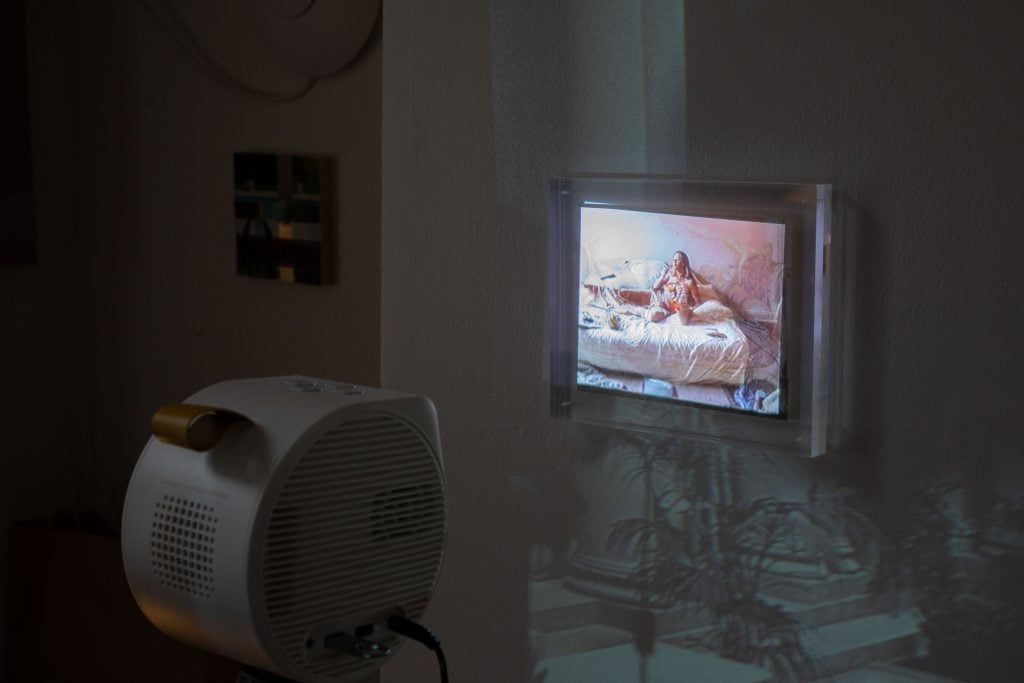
A close-up view of artist Nicole Cohen’s projection setup showing the video displayed over a printed static image. Photo by Adam Schrader
How often do you feel inspired by your students? Like, do you feel like being in an educational setting makes you feel more motivated or less motivated to make your own work?
It’s a good question. I genuinely like seeing students ignite their interests and take risks, and I think I’m a good facilitator of that. So it’s very empowering to see that. But it is tiring. It does take its toll. But I think that it’s in my DNA. I’m an educator. My grandmother was an educator, I really like working with education departments and museums.
Which makes sense because your mid-career survey is at Stony Brook.
I look forward to doing studio visits with the masters students. A lot of people don’t want to do that, but I like to do that. They’re going through similar things, hardships that you are, soul searching and trying to figure out if anything’s worth doing. As an older, more professional artist, I have experienced that I can learn a lot from them, and they can learn a lot from me because everybody has a different journey or road for being an artist. We’re going through similar things because you always have to reinvent yourself. You have to keep it fresh.
“Nicole Cohen: SUPER VISION” will be on view at the Zuccaire Gallery at Stony Brook University from July 18 through October 18, 2024.

